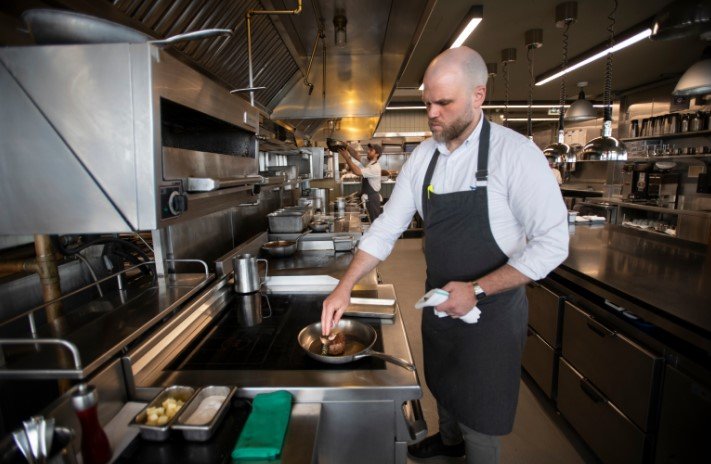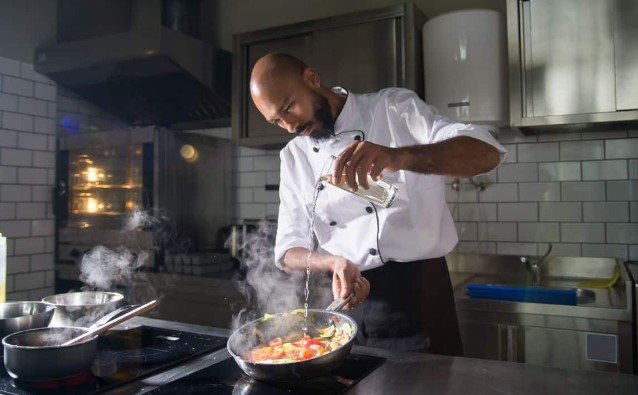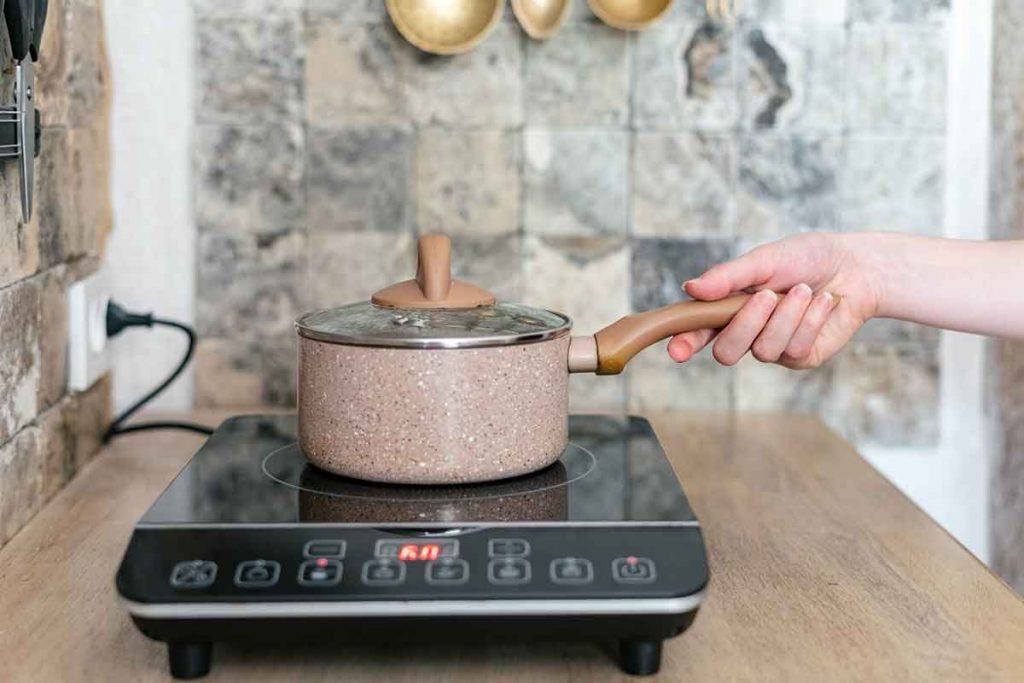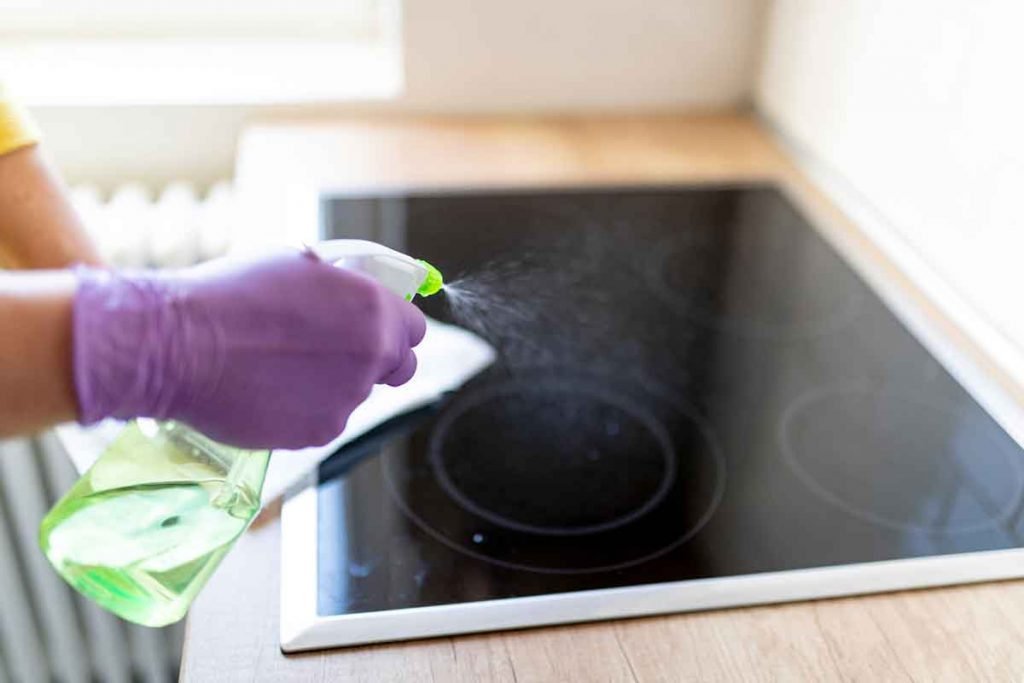A growing number of chefs now prefer induction cooktops. We asked some of the best cooks why they have switched to induction cooking. Many cited reasons like reduced energy bills, faster cooking times, and fewer safety risks.
Back in the day, almost 96% of professional chefs preferred using gas ranges. But that was before induction cookers made a splash. Back then, people didn’t know that these appliances were better than what they were used to, including traditional gas and electric stoves.
Now, induction cooktops are helping countless chefs prepare delicious meals and outshine their competitors. If you are a chef weighing whether or not to embrace this trend, you’re in the right place. Our article will help you make an informed decision by outlining the perks of induction cooking.
Read on.
Which Induction Cooktop Do Chefs Use?
Professional chefs use commercial induction cooktops.
Unlike residential-grade induction ranges, commercial cooktops are larger and more powerful than their counterparts. Most of these products are designed to accommodate larger pots and pans, and their wattage range is often higher. Some of the most powerful commercial induction cookers require up to 14,000W. But most residential appliances hover around 1700-3000W.
Read our article on Best Commercial Induction Cooktops for Chefs
So, Why Do Chefs Prefer Induction Cooking?
Walk into any upscale restaurant kitchen today, and you’re likely to see sleek black induction cooktops where the traditional gas range used to be. Induction has become the must-have cooking technology for chefs who want more control, efficiency, and safety in their kitchens. But what exactly makes this futuristic-looking cooktop such a game-changer?
Induction Cooktops Cook Faster
Long waiting times can bring any business to its knees, restaurants included. Very few people are patient today, and no one can blame them. We all have a lot to do and hardly enough time. If no one has enough time to handle crucial matters like nurturing their careers and caring for their loved ones, would they be willing to waste precious time in an eatery? Nope.
Consider this. Researchers asked people how they’d respond to a delayed order. 73% of the respondents said they’d cancel theirs if they were forced to wait upwards of 5 minutes. Savvy cooks know the risks of making people wait for their food. To cut waiting times and unnecessary delays, most have shifted to induction cooking, which is faster than other conventional methods.
Induction Cooktops Allow Precise Temperature Control
To seasoned chefs, precision cooking is nothing short of the Holy Grail. Have you ever had a dish so delicious you requested the chef to come out of their hidey-hole so you can complement them in person? If yes, you likely wondered, how do they do it? One of their secrets is precision cooking.
Precision cooking simply involves preparing a particular dish to a specific core temperature. A good example is preparing a nice, juicy steak with a crisp texture at exactly 500°F. The good news is that commercial induction cooktops have precise temperature control features. That is why the best cooks rely on these appliances.
Induction Cooktops Pose Fewer Safety Risks
Data from the National Fire Protection Association (NFPA) indicates that eating and drinking establishments experience an average of 11,100 fires annually. What causes all these unfortunate incidents? You guessed it- heat-producing appliances. They are also responsible for a significant percentage of the 12,000 annual burns reported in the restaurant and food service industry.
To avoid such issues, many forward-thinking chefs have switched to induction cooktops, which are associated with fewer safety concerns. Since these appliances don’t produce open flames, they are less likely to start kitchen fires. Their glass top surface also rarely gets hot enough to cause severe injuries. So many establishments use cooktops to mitigate the immense losses associated with injured employees.
Induction Cooktops are Energy Efficient
A report published by the US Department of Energy indicates that induction cookers are more energy efficient than traditional appliances. According to the document, cooking appliances that use induction technology are up to 3X more efficient than gas ranges. Their energy efficiency is also up to 10X higher than traditional smooth top electric ranges.
Do you see why professional cooks are now using induction cookers? And many are cutting their energy consumption immensely and enjoying significantly lower utility bills.
Induction Cooktops Make Kitchens Cooler
There’s a cliché that says, “If you can’t handle the heat, get out of the kitchen.” Admittedly, it makes sense. But no one should use it as an excuse for having an extra hot kitchen. In fact, no dedicated chef should allow their kitchen’s temperature to get out of hand. That is because excess heat causes heat stress, which can affect an individual’s ability to focus and be productive.
Most chefs familiar with the negative impacts of excess heat on restaurant workers have already switched to induction cooking. Why? Induction cooking appliances rely on a heating mechanism that only heats the cookware. As such, they produce minimum radiant heat and make commercial kitchens cooler and more comfortable to work in.
The Drawbacks/Disadvantages of Induction Cooktops for Chefs
While induction cooking clearly has some excellent benefits, it also comes with a few drawbacks that chefs should consider:

Must Use Magnetic Cookware
Induction works by inducing a magnetic field in cookware, so it requires pots and pans with iron in them. While cast iron, steel, and enameled cast iron work great, your lightweight aluminum or copper cookware won’t work on an induction cooktop unless specifically labeled induction-capable. Chefs will likely have to invest in some new cookware.
Takes Time to Learn
For chefs used to traditional gas flame or electric coil cooking, induction can throw off your cooking intuition at first. The instant heat response means timing and temperature control will be different than what you’re accustomed to. Be ready to ruining a few dishes as you figure out the quirks of your new induction cooktop!
No Open Flame Aesthetic
Some chefs just love the visual drama and heat of an open gas flame. Induction cooktops don’t quite offer that same aesthetic appeal. For chefs who care about the visuals, this can be a letdown.
Touchscreen Controls
Induction cooktops rely on digital touchscreen interfaces rather than classic knobs and dials. While this allows induction to offer precise temps, some chefs complain that the lack of physical controls takes getting used to. There’s less tactile feedback.
Higher Upfront Cost
Premium restaurant-grade induction cooktops are more expensive than comparable gas or electric models. However, since they’ll save on energy costs long-term, the investment should pay off over time.
Loud Fan Noise
Induction cooktops require strong built-in fans and internal electronics that can generate noticeable humming. This may disrupt the typical kitchen ambiance that some chefs prefer.
The Bottom Line
Many of the best chefs today use induction cooktops. Various factors have encouraged them to ditch their conventional ranges and adopt these appliances. For starters, induction cookers are more energy efficient, cook food faster, and have precise temperature control features.
If you are a professional cook and have yet to switch to induction cooking, now’s the perfect time. Get an induction hob and enjoy all the perks mentioned here. And remember, a busy kitchen calls for a commercial cooktop. Don’t purchase a residential-grade induction hob because it won’t meet your kitchen’s demands.
Common Questions
How is induction cooking different from traditional electric or gas cooktops?
With a traditional electric cooktop, coils or heating elements underneath the cooking surface get hot and transfer heat to the cookware through conduction. Gas cooktops ignite flames that heat up the bottom of pots and pans. Induction skips these steps by generating heat directly in the cookware via the magnetic field.
What kinds of cookware work best with induction cooktops?
You’ll want cookware with an iron, steel, or stainless steel base. Good options include cast iron, enameled cast iron, stainless steel pots and pans, and blackened steel cookware. Avoid aluminum, copper, glass, and ceramics unless marked induction-capable.
How do you maintain and clean an induction cooktop?
Daily cleaning just involves wiping down with a soft cloth, warm water, and mild detergent. No need for special cleaners. For stuck-on spills, use a plastic scraper. Avoid abrasive scrubbers. Check the manual for any manufacturer instructions on deeper cleaning or calibration. Proper cookware care will prevent scratches and metal marks from forming on the surface.



